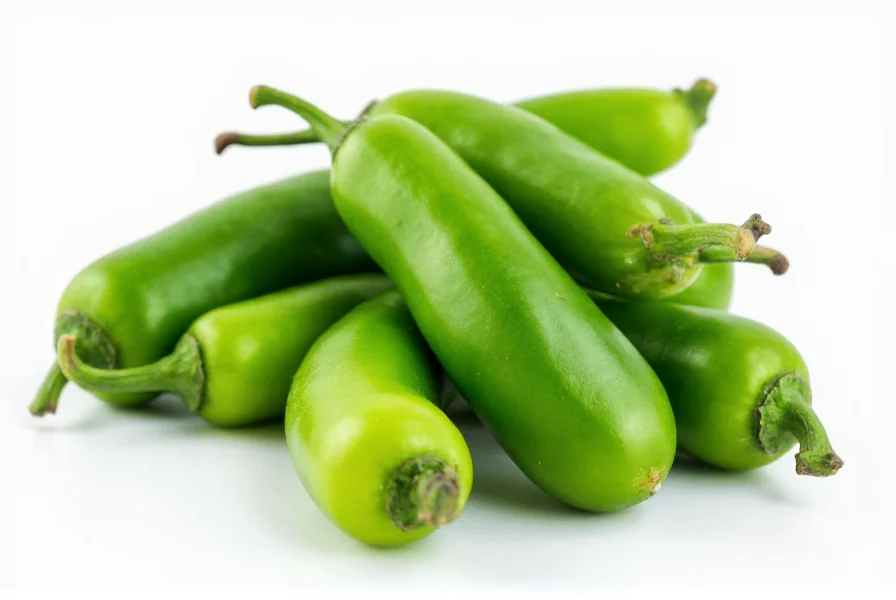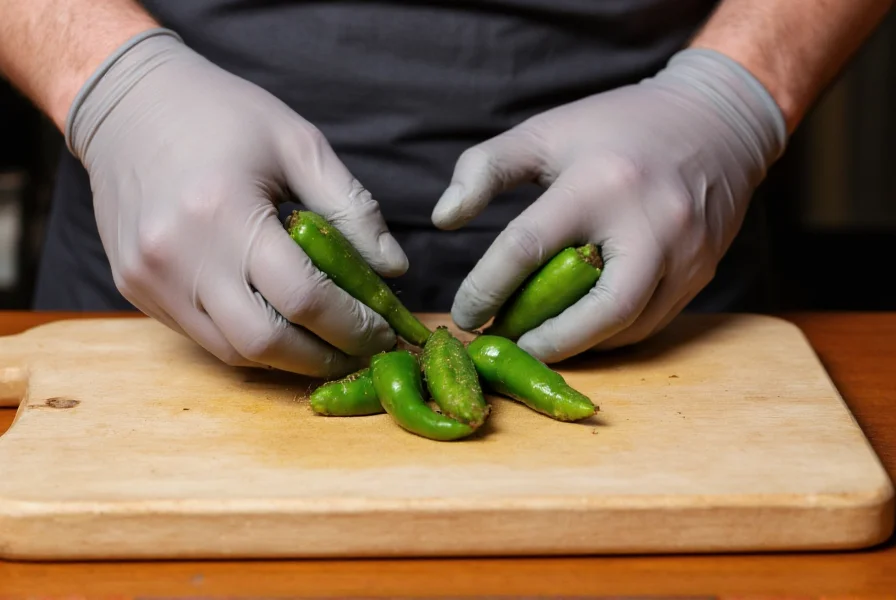When you're handling serrano chilies in the kitchen, understanding their precise heat level helps you create balanced dishes without overwhelming spice. These slender, bright green peppers deliver a clean, grassy heat that builds quickly but doesn't linger as long as some hotter varieties.
Understanding Serrano Chili Heat Measurement
The Scoville scale quantifies chili pepper heat by measuring capsaicin concentration—the compound responsible for that burning sensation. Serranos consistently register between 10,000-23,000 SHU, though specific conditions can push them toward either end of this spectrum. For accurate heat assessment:
- Test one pepper before adding multiple to recipes
- Remove seeds and white membranes for milder flavor
- Consider growing conditions—stress often increases heat
- Ripe red serranos typically run hotter than green ones
| Pepper Variety | Scoville Heat Units | Heat Comparison |
|---|---|---|
| Serrano | 10,000-23,000 SHU | Base reference |
| Jalapeño | 2,500-8,000 SHU | 2-5x milder than serrano |
| Habanero | 100,000-350,000 SHU | 5-15x hotter than serrano |
| Cayenne | 30,000-50,000 SHU | 1.5-2x hotter than serrano |
| Thai Bird's Eye | 50,000-100,000 SHU | 3-8x hotter than serrano |
Factors That Influence Serrano Heat Levels
Several variables affect how hot your serrano peppers will be:
Growing conditions: Plants stressed by inconsistent watering or nutrient deficiencies often produce hotter peppers. Counterintuitively, optimal growing conditions can yield milder serranos.
Ripeness: Green serranos provide bright, vegetal heat while red-ripened versions develop more complex flavor with increased spiciness. Fully mature red serranos typically measure at the higher end of the Scoville range.
Plant position: Peppers growing in direct sunlight usually develop more capsaicin than shaded counterparts. The first fruits of the season often run milder than later harvests.
Practical Handling and Culinary Applications
When working with serrano chilies, proper handling prevents painful kitchen accidents. Always wear gloves when chopping multiple peppers, and never touch your face during preparation. The capsaicin oil transfers easily and can cause severe irritation to sensitive areas.
Chefs appreciate serranos for their clean heat that doesn't overpower other ingredients. They work particularly well in:
- Fresh salsas where jalapeños lack sufficient kick
- Marinades for meats requiring medium heat penetration
- Pickled preparations that mellow their intensity
- Ceviche for subtle background heat
- Infused oils when properly processed

Serrano vs. Jalapeño: Understanding the Heat Difference
Many home cooks wonder is serrano hotter than jalapeño—the answer is definitively yes. Serranos typically run 2-5 times hotter than standard jalapeños. While jalapeños max out around 8,000 SHU, even the mildest serranos start at 10,000 SHU.
This heat difference matters significantly in recipe development. Substituting serranos for jalapeños without adjustment often creates unexpectedly spicy dishes. When swapping, use half the quantity of serranos compared to jalapeños, then adjust to taste.
Safety Considerations for Hot Pepper Handling
Understanding how hot are serrano peppers compared to jalapeños helps prevent kitchen mishaps. Even medium-heat chilies like serranos require proper handling:
- Wash hands thoroughly with soap after handling, not just water
- Avoid contact with eyes and sensitive skin areas
- Use separate cutting boards for hot peppers
- Remove seeds and membranes to reduce heat by up to 80%
- Have dairy products nearby to counteract accidental burns
If you experience skin irritation, apply milk or yogurt to affected areas—capsaicin dissolves in fats but not water. For persistent eye exposure, seek medical attention rather than attempting home remedies.

Why Your Serranos Might Vary in Heat
Gardeners often ask why are my serrano peppers not hot—several factors explain inconsistent heat:
- Overwatering dilutes capsaicin production
- Excessive nitrogen fertilizer promotes leaf growth over heat compounds
- Harvesting too early prevents full capsaicin development
- Some serrano varieties naturally run milder
- Cool growing seasons reduce overall heat levels
Conversely, extremely hot serranos might result from drought stress, nutrient deficiencies, or extended time on the plant. Understanding these variables helps you control heat levels for consistent culinary results.
Frequently Asked Questions
How does serrano heat compare to cayenne?
Serranos (10,000-23,000 SHU) are noticeably milder than cayenne peppers (30,000-50,000 SHU). Cayenne typically runs 1.5-2 times hotter than even the hottest serranos, making it unsuitable as a direct substitute without quantity adjustments.
Can you eat raw serrano peppers safely?
Yes, you can safely eat raw serrano peppers in moderation. Their heat registers quickly but dissipates faster than super-hots. Start with small amounts, remove seeds for milder flavor, and have dairy products available to counteract the burn. Those with sensitive stomachs should cook them first.
Do red serranos taste different from green ones?
Yes, red serranos develop more complex flavor as they ripen, with increased sweetness balancing their heat. They typically measure 20-30% hotter than green serranos while offering fruitier notes. Green serranos provide brighter, grassier flavor with slightly less intense heat.
How can I reduce serrano pepper heat in a dish?
To reduce serrano heat in prepared dishes: add dairy (sour cream, cheese, yogurt), incorporate acid (lime juice, vinegar), include sweetness (honey, sugar), or dilute with additional non-spicy ingredients. Never use water—it spreads capsaicin rather than neutralizing it.











 浙公网安备
33010002000092号
浙公网安备
33010002000092号 浙B2-20120091-4
浙B2-20120091-4